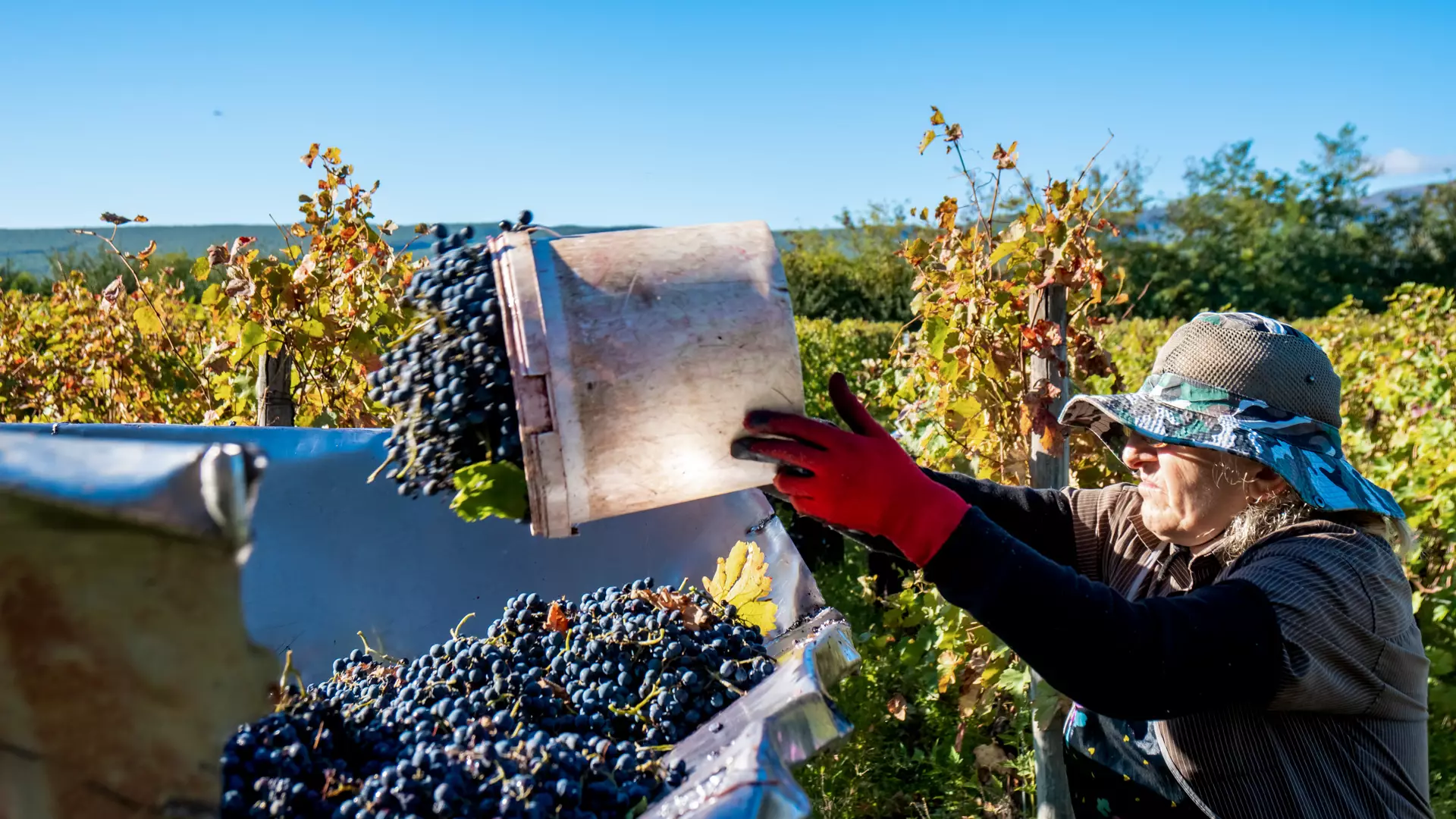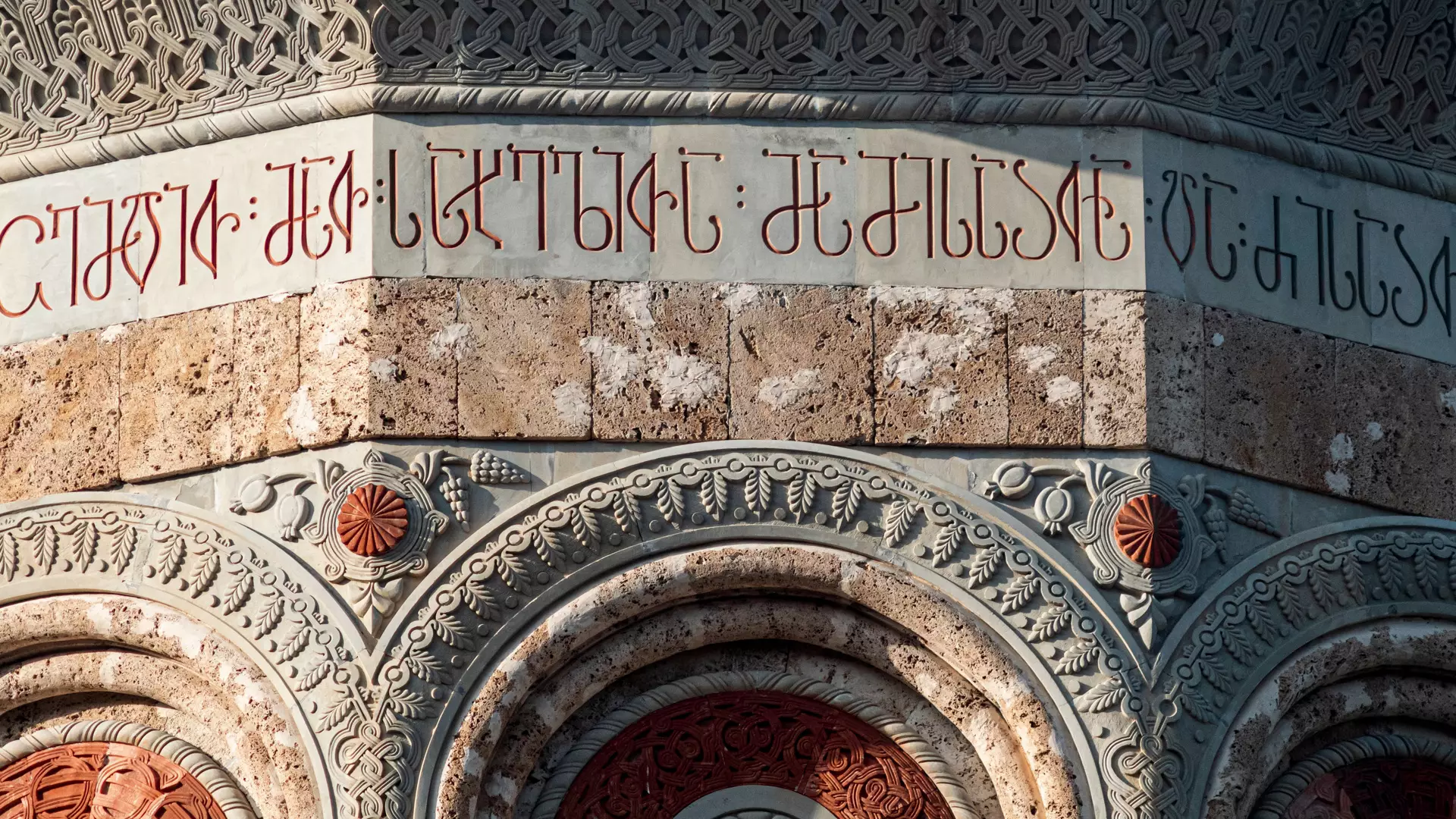Ancient Wonders of Modern Georgia
Homeland of the first Europeans
Georgia is the homeland of the first Europeans. In 1991, a sensational discovery in Dmanisi proved that people lived in this territory 1.8 million years ago. Scientists discovered and restored the skulls of males and females and named them Zezva and Mzia. The species itself was named Homo Georgicus, a Georgian human, which is transitional between the “handyman” (Homo habilis) and the “upright man” (Homo erectus).
Along with human remains, tools and animal bones have been found in the area, indicating their hunting lifestyle. The discovery revealed that the Dmanisian man is the oldest representative of homo outside of Africa. These discoveries changed the representation of the origin, migration, and settlement of the first humans.
Kvemo Kartli region can be considered one of the great repositories of ancient history, as several archaeological discoveries have been made in this area, among the latest ones is the tooth of "Orozmanian cousine of Dmanisian Zezva and Mzia”. The tooth, dated 1.8 million years ago, was discovered in Orozmani village in 2022.
Homeland of wine

Georgia is the home of cultivated grapevine. Archeological discoveries proved that in the South Caucasus, in Kvemo Kartli Region, grape pips were found, dating to 6000 BCE. During the Neolithic period, vineyards were planted on Georgian territory and they used the cultural grapes to make wine which played a crucial role in economic life.
Georgia is proud of its 8000-year-long, continuous tradition of winemaking. An ancient wine cellar from the Eneolithic era was discovered where a special clay vessel, qvevri, was used to make and store wine. Gold, silver, and bronze drinking bowls, as well as double-walled, thermos-like qvevris have also been found, indicating the highest development of wine production.
Wine is still a symbol of Georgian culture that is seen in works of art, statues, ancient cultural monuments, and buildings.
Homeland of Wheat
Along with wine, Georgia is also considered to be the homeland of wheat. The first examples of farming date back to the Mesolithic period. In the Neolithic and Eneolithic periods, wheat, barley, and millet varieties were grown in Georgia. Archaeological samples of wheat grains were found on the monuments such as Arukhlo, Khrami Hill, Shulaveri, Chikhori, and Kheltubani of the VI-IV millennium BCE.
Herodotus and Xenophont, ancient Greek historians, wrote about wheat from ancient Georgia. Additionally, historians noted that Asia is the homeland of 12 types of wheat and the south Caucasus is the homeland of 8 types. Georgia ranks first in the world for endemic varieties and forms of wheat.
A 34000-year-old Thread
In the Upper Paleolithic era, in the region now known as Chiatura municipality, people in the cave crafted thread for the first time. People had the opportunity to knit or restore their clothes, sew shoes, and create different items, a huge progressive step forward to modern civilization.
The flax thread discovered in the Dzudzuana cave is 34000 years old. Before this discovery, it was believed that the oldest thread was found in Czech Republic. Examination of the flax thread revealed that it had been crafted, crushed, pressed, and woven and some fibers were even dyed. Flint and obsidian tools, animal bones, and primitive dog and horse remains were found in the same Dzudzuana cave.
An Ancient Gold Mine
If you look through the myths about Georgia, you will find the story about the Argonauts who stole the golden fleece from the Kingdom of Colchis. However, Colchis was never a mythological place – it existed in western Georgia territory in the 5th century and during that time, it was one of the most developed civilizations.
The legend about Golden Fleece and many other historical reports concerning gold mining and processing enlarged interest to conduct archeological research. As a result, samples of goldsmithing were found including engraved and decorated diadems, jewelry, and other exquisite items. Nowadays, these artifacts are preserved in the Golden fund of the National Museum of Georgia.
The world’s oldest gold mine is in the Kvemo Kartli Region. The archaeological site and the oldest golden mine Sakdrisi dates to the III-II millennium BCE. Among the rare gold items, the Golden Bowl of Trialeti stands out. It was made in II millennium BCE and proves the high-level development of goldsmithing at that time.
Valuable samples were discovered in Vani, in western Georgia, where the myth about the Argonauts comes alive.
Ancient Metallurgy
Myths tell stories not only about gold. The legend about the rebellious hero Amirani, who was chained to the rock for challenging gods, is a sign that metallurgy was well-developed in Georgia. In the XX century, several archaeological discoveries turned legends into reality, as bronze and iron products were discovered. From the beginning of the Late Bronze Age (XV century BCE), a large amount of bronze material was found in Colchis, including bronze bars, ritual and military weapons, various jewelry, etc.
Historical facts and discoveries confirm that ancient metallurgic centers were functioning in IV-I millennium BCE. Exceptionally artistic and culturally valuable items were made from copper, iron, silver, gold, etc.
Ancient Writing
Georgian language has one of the oldest writing systems in the world. It consists of three historical forms from different eras: Asomtavruli, Nuskhuri, and Mkhedruli, all included in the list of intangible cultural heritage by UNESCO.
According to studies, the creation of the Georgian alphabet began in III century B.C. by King Parnavaz I. However, some artifacts prove that there were unknown writings used in Georgia.
In 2015, on Grakliani Hill, in the Shida Kartli region, a one-line inscription of unknown writing was discovered, confirming that 2,700-3,000 years ago, writing was used in the territory of Georgia.
Cultural heritage monuments

Artifacts are kept in the museums of Georgia. Visit some of the museums and travel between eras.
However, there are many monuments that cannot be kept in museums! They are located all over Georgia and are of great interest, including churches and architectural objects, nature monuments, and preserved landscapes. Some of them are protected by UNESCO and some are candidates for membership on the UNESCO list. According to the monuments of cultural heritage, you can create a special route to travel around all of Georgia.
Unique Villages
The unique villages listed among the world heritage monuments have to be emphasized separately – for example, the medieval village of Chazhashi, a part of the Svanetian community Ushguli, sitting on 2,160 meters above sea level.
The list of must-see monuments includes Bochorna village in Tusheti, also one of the highest settlement in Europe, together with Ushguli. Shatili is a terraced fortress-village and one of the unique monuments of Georgian architecture from the 12-17th centuries where you can see the flat-roofed houses and towers.
Rich folklore

Georgian polyphony is an ideal example of how differences can create harmony. In 1977, the Voyager 2 spaceship took the melody of the Georgian folklore "Chakrulo" into space, so that the representatives of the alien civilization could hear the sounds of the Earth.
Traditional Georgian dances are the real pearl of Georgian folklore. Folklore diversity is proven by various legends, myths, and folk crafts – the rarest carpets, enamel, pottery, etc.
Modern Georgia awaits you with hospitality, unique cuisine, untouched nature, mountain and sea resorts, beautiful canyons, mountain peaks, and a diverse climate.
Welcome to one of the world’s oldest living civilization!
Cookie Policy
